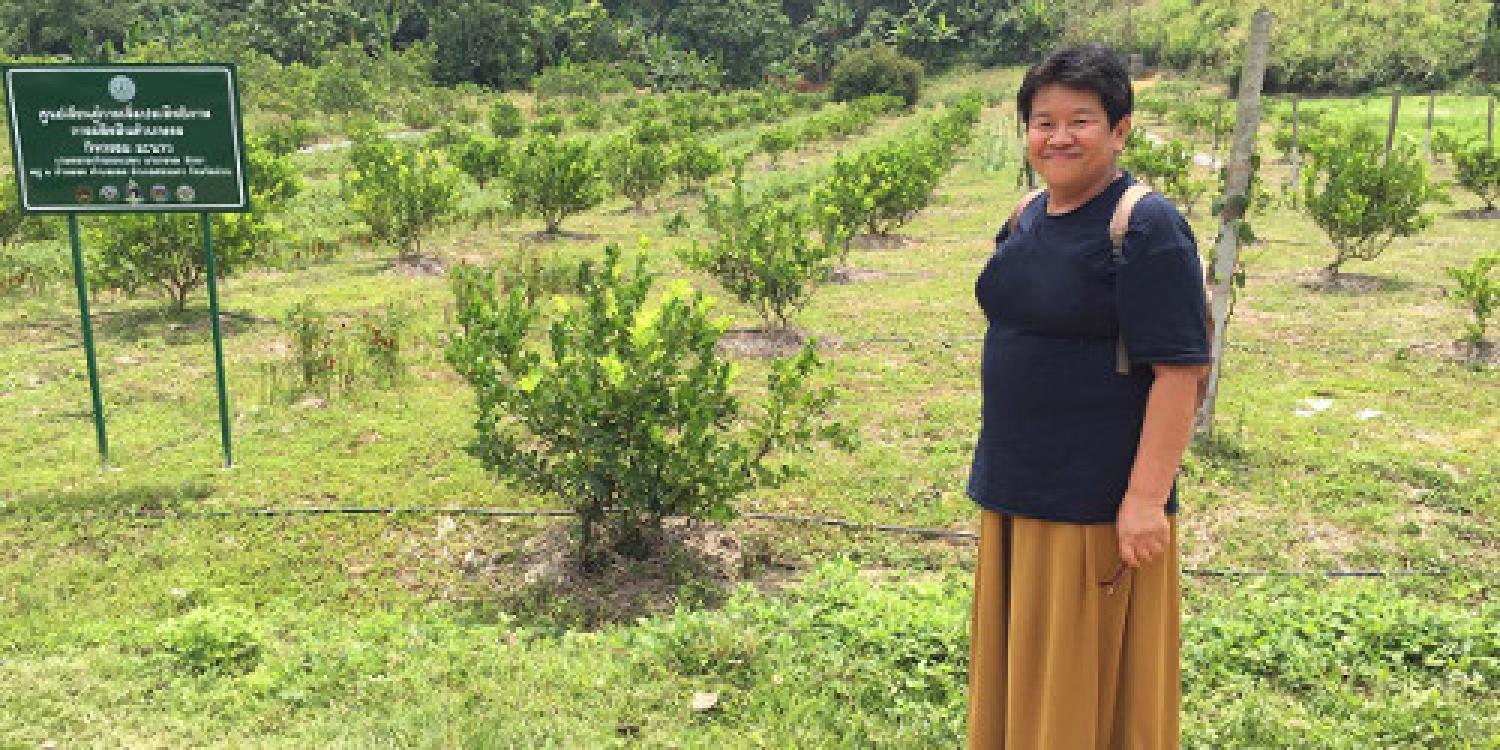
Researchers in Thailand are investigating “creative tourism” as a way to support local economies and protect their land
When Dr. Sukanda Luangon Lewis visited Vietnam to make batik cloth with a local craftswoman, she saw an opportunity to solve a growing problem while also helping communities like this around the world.
Vietnam is one of many countries experiencing economic benefit from a surge in tourism, but also paying a hidden price. Globally, we take about 1.2 billion international trips a year, and tourism contributes an estimated $7.61 trillion to the economy. But in our eagerness to visit more and more remote places, we are changing the once pristine landscapes, putting habitats and biodiversity at risk. At the same time, the people living in the local communities rarely benefit from the tourism, and instead run the risk of losing their livelihoods.
Upon returning to Thailand, where Dr. Lewis is an economics professor and Deputy Director of Research at the Institute of Asian Studies, Chulalongkorn University, she realized her experience could be an opportunity for “creative tourism” to support sustainable development. So she began to design a research project, using Scopus and SciVal to pinpoint an unmet need, collecting data on the impact of creative tourism and assembling a multidisciplinary research team.
The trouble with tourism
Dr. Lewis was familiar with the urgency of the situation well before she set out on her trip to Vietnam. Every year, people travel to Thailand in droves: there were 32.6 million visitors in 2016, an increase of 72 percent in just five years. The sector provides about 2 million jobs, accounting for 6 percent of the country’s employment last year. But not everyone – or everything – benefits from the prosperity, as Dr. Lewis explained:
“Unrestrained tourism threatens our natural resources. It also has potential harmful effects on the environment, such as natural habitat loss, increased pollution, soil erosion and shortage of water resources. Revenues from tourism go to the rich and middle income people, according to some research, leaving the poor behind and widening the poverty gap.”
This is certainly true of Thailand; some of the beautiful places Dr. Lewis had visited decades ago have since changed beyond recognition. When she spent a day making batik cloths with a local woman in Sapa, Vietnam, she realized that giving tourists hands-on experiences of living like the locals would put money in the pockets of those who need it, while preserving what is left of the pristine environment.
Making a traditional Vietnamese batik cloth is labor intensive: craftswomen draw the elaborate, meaningful designs on the cloth by hand and then dye the cloth with deep blue pigment from the indigo plant. They draw the characteristic patterns on it using a pen dipped in hot wax. After dying the cloth, they boil away the wax, and the dark blue patterns are left, often on both sides.
The whole process can take several days, yet tourists in Vietnam, Indonesia and many other countries buy the cloth cheaply with little understanding of the process – or the impact on the people making it. After a day of doing the work, Dr. Lewis understood how much effort goes into producing the cloths, and she bought a few pieces of the craftswoman’s batik cloths to show her appreciation. Her experience was formative:
“It’s so, so beautiful in Sapa but it’s possible to do something more fulfilling than just look at the mountains. We can talk to the people, see how they work and earn money, as in the case of the Hmong women. In the village, I saw a Hmong woman doing her laundry with her feet; she may have been old, but she was still working hard. You have to experience this first-hand, then you can appreciate the reality.”
Creating connectivity
Dr. Lewis was inspired to take action. She began to investigate research on similar integrative travel experiences in Thailand. Using Scopus to explore the peer-reviewed literature, she discovered an opportunity: many communities were already offering integrative experiences, yet there was very little research being done in this area, and nothing that aimed to have a practical impact on local people.
“We want tourism – it is a way to help people. But how can we really bring the benefit to the poor and how can we conserve the environment? There is a potential solution: what we think of as network tourism – creative, sustainable approaches to tourism, that enable producers and consumers to relate and get value from their connections.”
With this potential solution, Dr. Sukanda started to build a multidisciplinary team of experts from Chulalongkorn University to look at tourism from different perspectives. Geographers could first identify the areas that have tourism potential, historians could tell the hidden story of a city or region and engage the local people, and designers from the Faculty of Fine Arts could work with locals to develop fashion and product lines that appeal to international travelers. Having health experts on the team would enable them to provide guidance on using native herbal medicines, and economists could visit the local communities before and after the sub-projects to determine their impact.
With this multidisciplinary team, Dr. Lewis has designed 18 interwoven projects with three main objectives:
- To use cultural capital and innovations to increase the competitive potential of Thailand’s tourism sector.
- To encourage the peaceful co-existence of people in multicultural society and enhance better relationships with neighboring countries.
- To develop creative, sustainable tourism with appropriate management of the environment.
With their different perspectives, the team can explore ways to connect tourists and people in the local community more closely, ensuring the locals benefit directly from the tourism and appreciate the need to preserve the environment.
